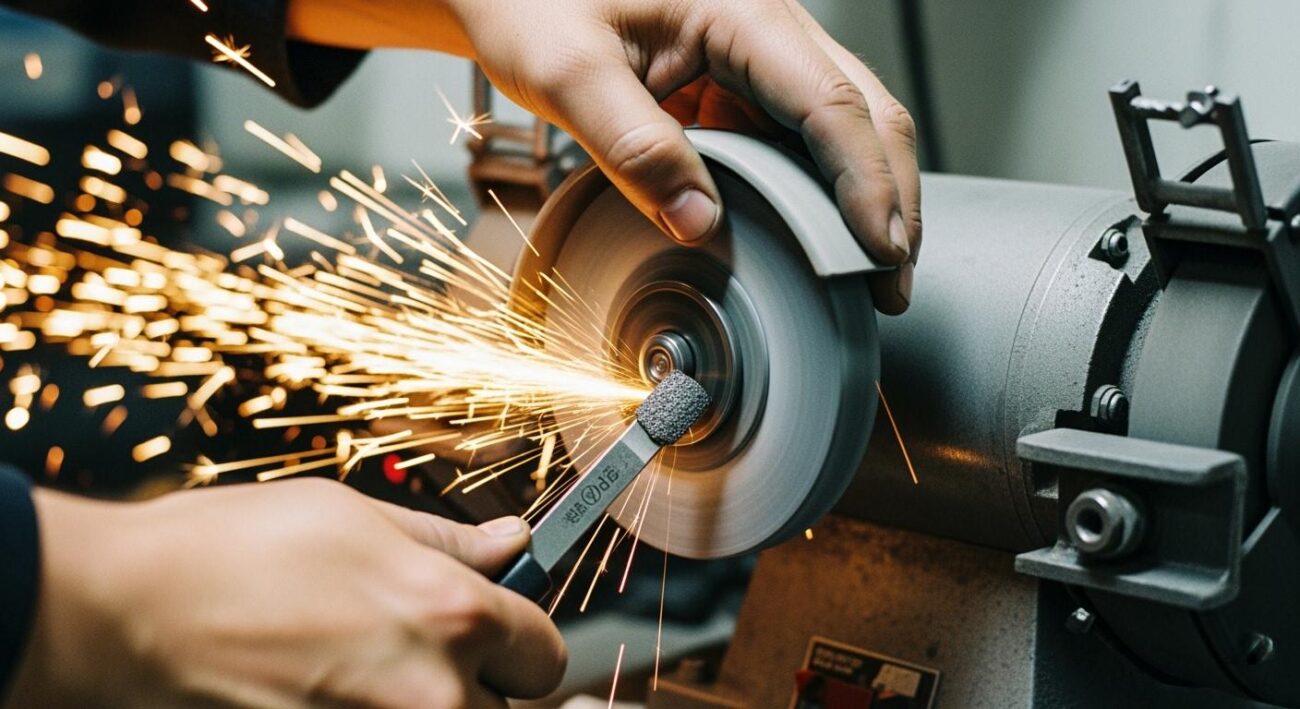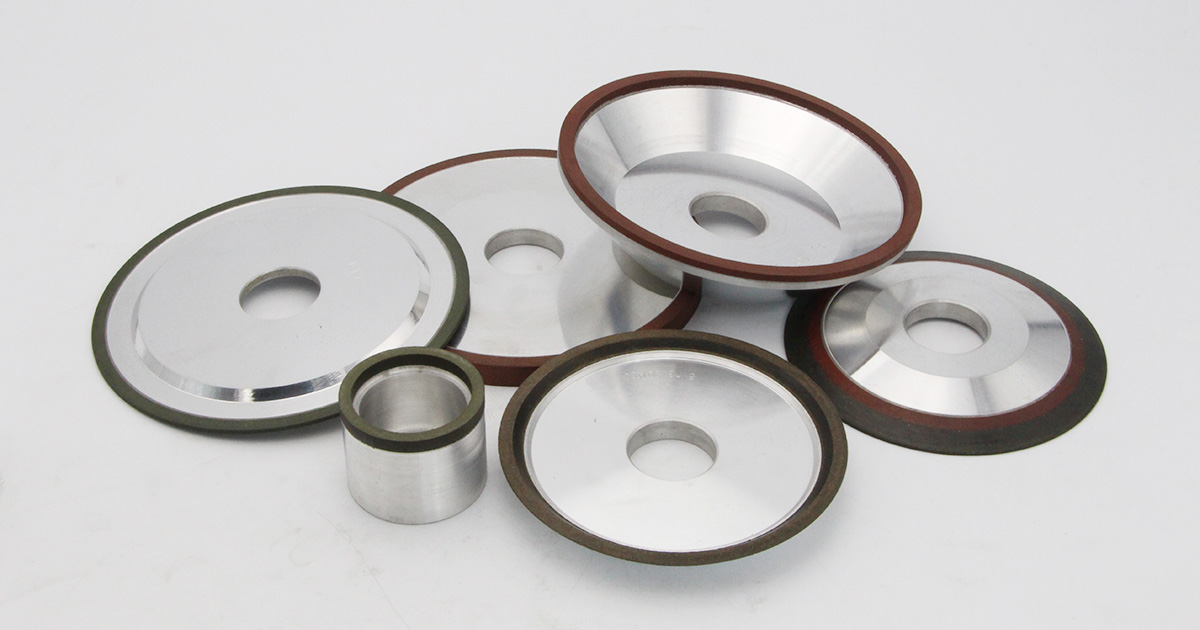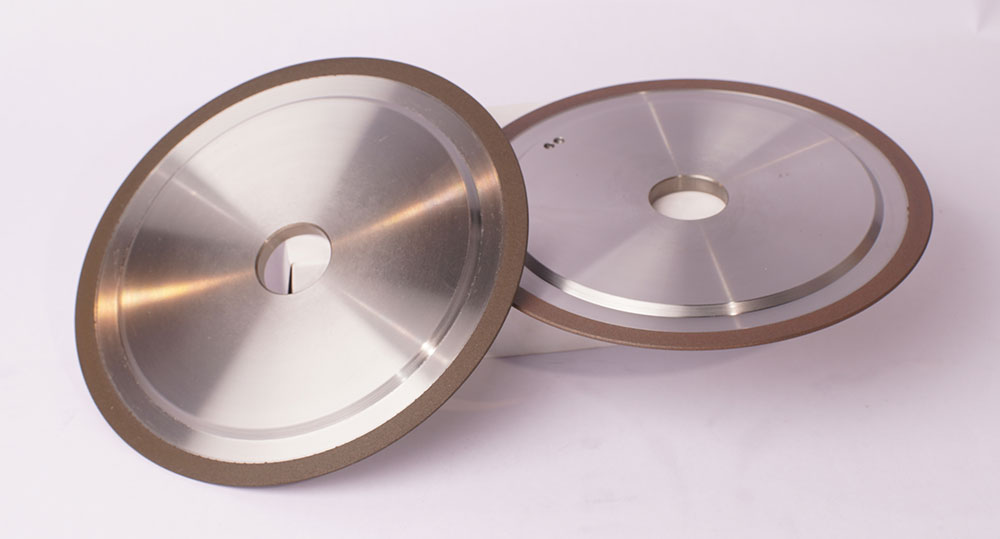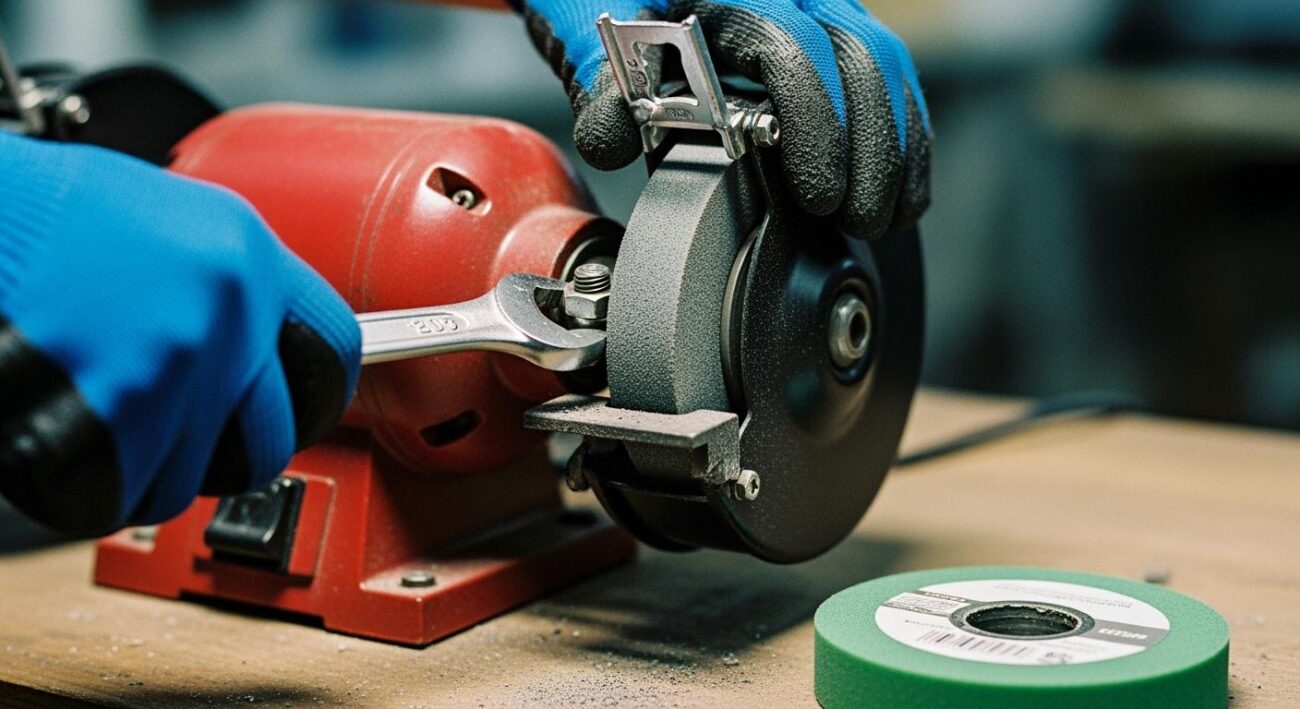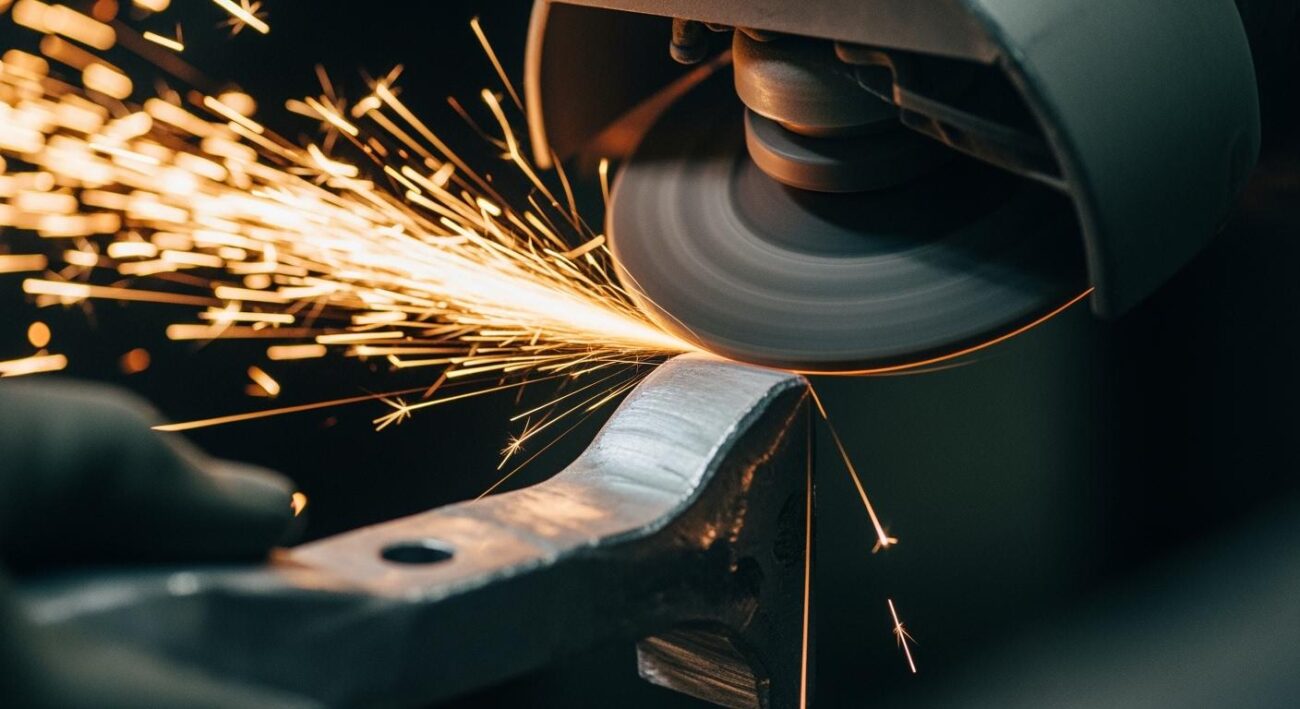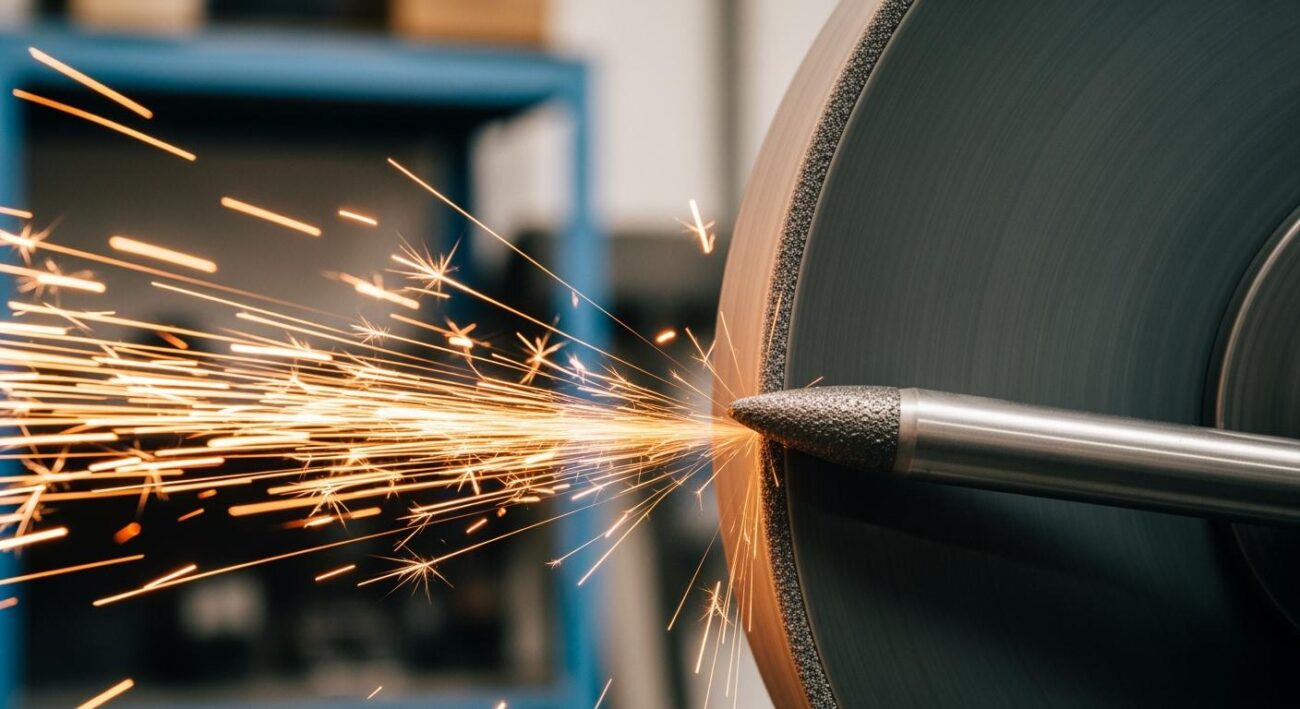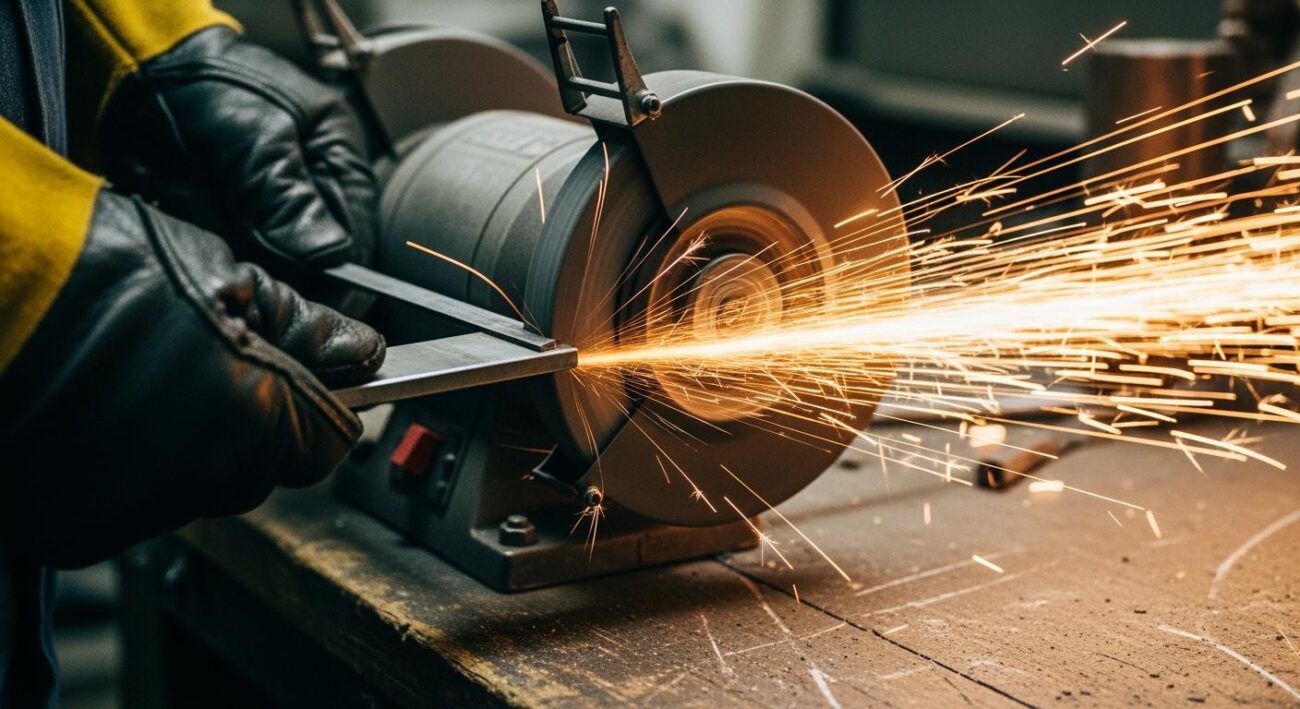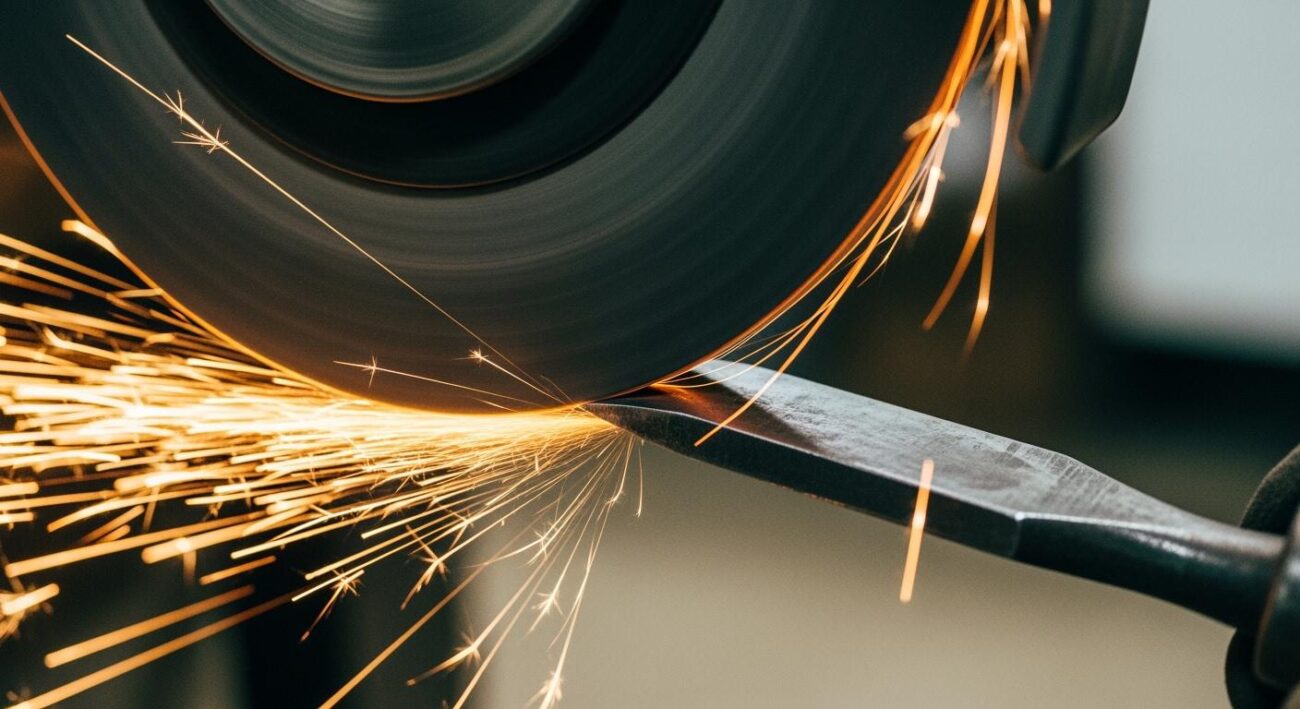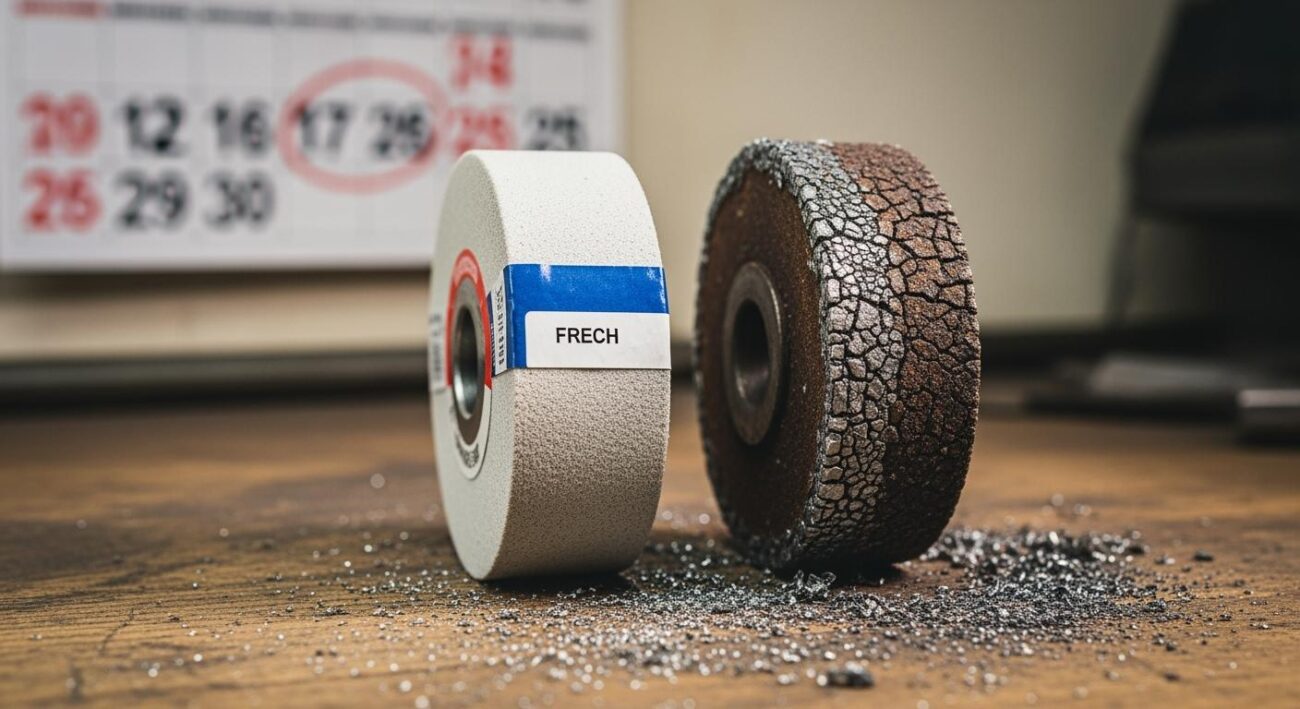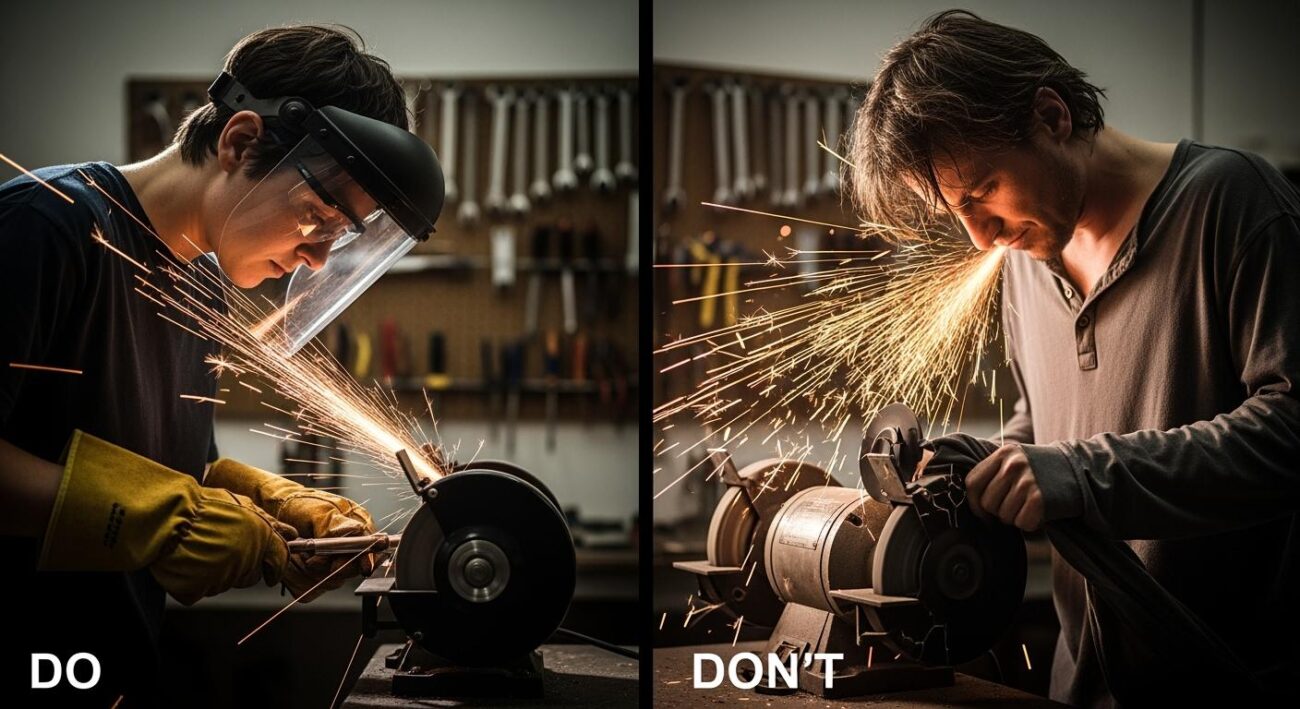Operators aim to boost efficiency and cut costs in their grinding processes. Understanding what determines a grinding wheel’s life is a critical step toward achieving these goals. A wheel’s longevity results from its inherent design, its use in operation, and its routine maintenance.
Many factors can shorten its lifespan. For example, incorrect wheel selection for the material or poor equipment clamping can lead to rapid wear. Consistent maintenance, including regular wheel dressing, is essential for maximizing performance and durability.
Key Takeaways
- A grinding wheel’s life depends on its design, how it is used, and how it is cared for.
- Choosing the right abrasive material and bond type for the job makes the wheel last longer.
- Using the correct speed, pressure, and coolant during grinding prevents early wear.
- Regular cleaning and shaping of the wheel keeps it sharp and working well.
- Proper handling and mounting of the wheel prevent damage and ensure safety.
Key factors that affect the life of the grinding wheel
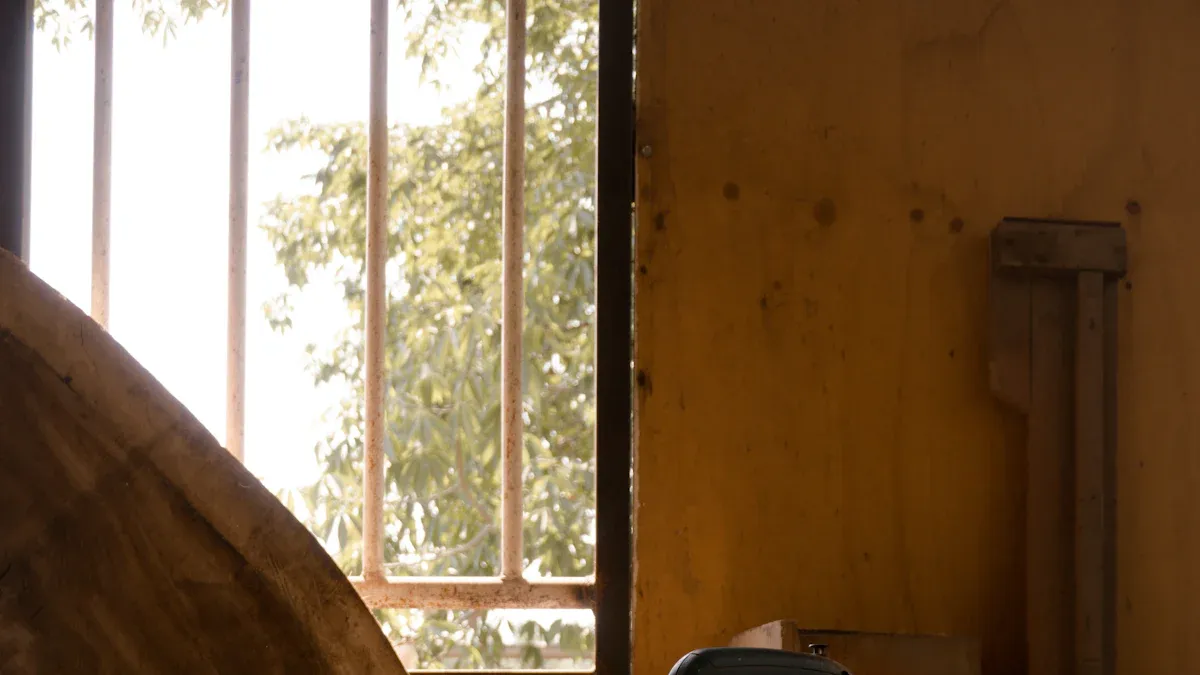
The specifications of the grinding wheel are the foundation of its performance and durability. Understanding these intrinsic properties is the first step in maximizing a wheel’s potential. The primary factors that affect the life of the grinding wheel include the abrasive material, the bonding agent, the grain size, and the wheel’s internal structure. Each of these elements plays a distinct role in how the wheel wears and performs.
Abrasive Material
The choice of abrasive material is arguably the most critical decision. The abrasive material must be significantly harder than the workpiece to cut it effectively. Abrasives are broadly categorized into conventional abrasives and superabrasives.
- Conventional Abrasives: Materials like aluminum oxide and silicon carbide are effective for grinding softer metals and general-purpose applications. Aluminum oxide is a reliable choice for steels and steel alloys.
- Superabrasives: Diamond and Cubic Boron Nitride (CBN) are known as superabrasives. They possess superior hardness and wear resistance, making them ideal for grinding extremely hard materials.
Superabrasives extend wheel life dramatically when used correctly. CBN, for instance, has high thermal stability, making it the preferred abrasive material for grinding hardened steels where diamond can react chemically. Diamond, the hardest known material, excels at grinding non-ferrous metals, ceramics, glass, and composites. For these demanding jobs, operators often turn to specialized tools.
Aimgrind‘s Solution: For industries working with hard and brittle materials like ceramics or composites, Aimgrind’s diamond grinding wheels offer a premium solution. This abrasive material ensures exceptional durability and precision, leading to a longer service life and fewer wheel changes.
The hardness of an abrasive material directly impacts its wear resistance. A comparison shows the vast difference between superabrasives and conventional options.
| Material | Knoop Hardness (N/mm²) | Abrasion Resistance (vs. Al-oxide) |
|---|---|---|
| Diamond | 70,000 | ~4x |
| CBN | 45,000 | ~4x |
| Aluminum Oxide | 20,000 | 1x |
This table illustrates why a superabrasive grain lasts much longer than a conventional grain when grinding tough materials.
Bonding Agent Type
The bonding agent, or “bond,” is the glue that holds the abrasive grain particles together. The characteristics of the bond material and its strength directly influence the grinding wheel’s life. A harder bond holds onto the abrasive grain longer, which is ideal for soft materials. A softer bond releases the grain more easily, exposing fresh, sharp cutting edges, which is necessary for grinding hard materials.
The main types of bonds include:
- Vitrified Bond: This is a glass-like bond that is very rigid, strong, and porous. It offers excellent shape retention and is resistant to heat and chemicals, making it suitable for precision grinding.
- Resin Bond: This bond is more flexible and offers good shock absorption. It is well-suited for applications requiring a fine finish and for grinding materials like stainless steel and tough alloys.
- Metal Bond: As the strongest bond type, it provides the highest wear resistance and excellent form-holding. It is the standard for wheels using a superabrasive grain to cut hard materials like glass and ceramics.
The bond’s chemical composition and mechanical properties are key factors. A bond with a higher elastic modulus, or stiffness, provides better support for each abrasive grain, improving retention and cutting efficiency. This reduces wheel wear and extends performance.
Aimgrind’s Customization: The choice of bond is critical. Aimgrind offers wheels with resin, metal, and vitrified bonds, allowing for customized specifications of the grinding wheel. This ensures the bond is perfectly matched to the abrasive material and application, maximizing wheel life.
Grain Size and Grit
Grain size, also known as grit, refers to the size of the individual abrasive grain particles in the wheel. It is designated by a number; a smaller number indicates a larger, coarser grain, while a larger number indicates a smaller, finer grain. The grain size and distribution affect both the material removal rate (MRR) and the final surface finish.
- Coarse Grain (Low Grit Number): A larger grain removes more material quickly. This is ideal for rapid stock removal but results in a rougher surface finish.
- Fine Grain (High Grit Number): A smaller grain removes less material but produces a much smoother, finer surface finish. This is necessary for precision and finishing work.
Choosing the right grain size involves a trade-off. Using a grain that is too coarse can leave undesirable scratches on the workpiece. Conversely, using a grain that is too fine for heavy stock removal can lead to slow work and premature wheel loading, where chips clog the wheel’s surface. The grain size and distribution are important factors that affect the life of the grinding wheel.
Wheel Structure and Density
Wheel structure refers to the spacing between each abrasive grain. It is rated on a scale from 1 (densest) to 17 (most open or porous). This density determines the amount of space available for chip clearance and coolant flow.
- Dense Structure (Low Number): A wheel with a dense structure has less space between each grain. It provides more cutting points per square inch, which is beneficial for achieving fine finishes and holding precise forms.
- Open Structure (High Number): A wheel with an open structure has more space between each grain. This porosity provides ample room for chips to be cleared away and for coolant to reach the cutting zone, reducing heat buildup and wheel loading. This is ideal for heavy stock removal and grinding heat-sensitive materials.
Proper structure selection prevents the wheel from “loading,” a condition where grinding debris clogs the pores. An open structure allows chips to escape easily, keeping the wheel cutting freely and extending its effective life.
Operating conditions and the grinding wheel’s life
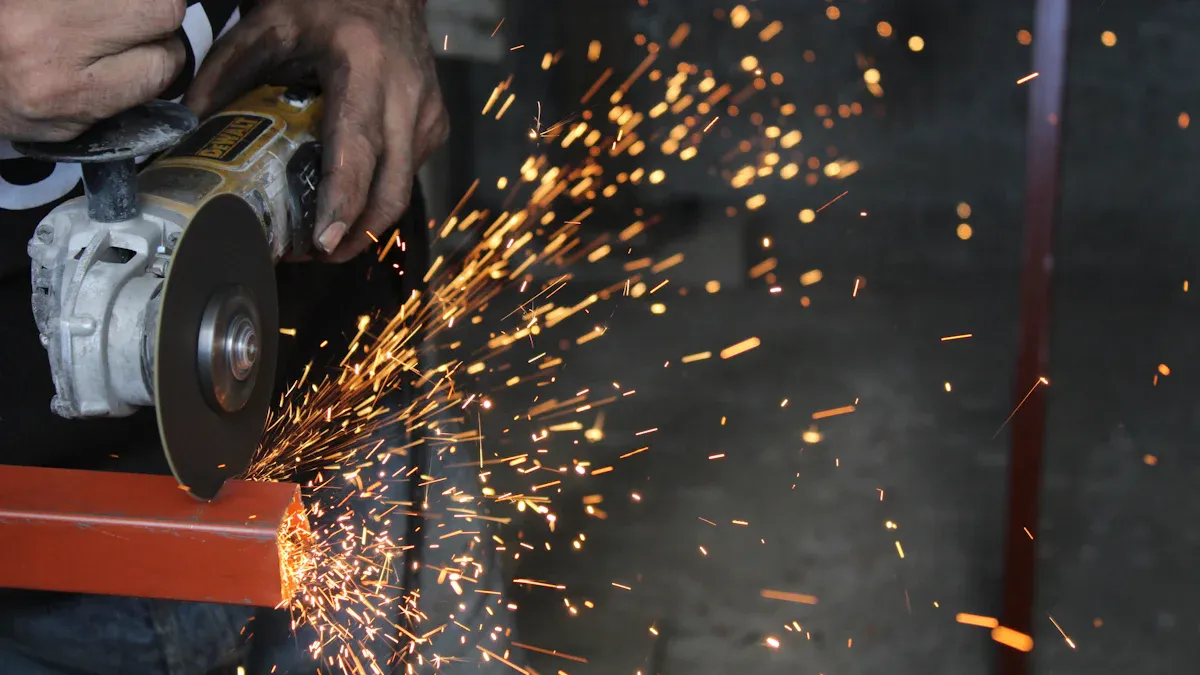
A high-quality grinding wheel can only perform at its best under the right operating conditions. The way an operator uses the wheel directly impacts its efficiency and lifespan. Key operational factors, such as speed, pressure, and coolant use, are controllable variables that determine performance. Mastering these parameters is essential for extending the life of grinding wheels and achieving consistent results.
Grinding Speed and Heat
Grinding speed, measured in surface feet per minute (SFPM), is one of the most critical factors in the grinding process. Every wheel has an optimal speed range. Operating outside this range can lead to poor performance and rapid wear.
Excessive heat generated in the grind zone can soften the grinding wheel, leading to premature wear. Running a wheel too fast is a primary cause of this heat buildup. This can result in “grinding burn,” a form of thermal damage that harms both the wheel and the workpiece.
Effects of Excessive Speed:
- It causes metallurgical changes in the workpiece surface, such as micro-cracks and residual stress.
- It reduces the fatigue strength of the material, making it prone to failure.
- It accelerates abrasive wear by damaging the sharp cutting edges of the grain.
Operating a wheel beyond its maximum rated speed not only reduces efficiency but also poses a significant safety risk. Operators should always adhere to the manufacturer’s recommended speed ranges. The optimal SFPM varies based on the wheel’s bond type and whether the process is wet or dry.
| Wheel Bond (Wet Grind) | SFPM (Wet Grind) | Wheel Bond (Dry Grind) | SFPM (Dry Grind) |
|---|---|---|---|
| Resin Bond | 3,937 – 9,843 | Resin Bond | 3,937 – 7,874 |
| Metal Bond | 3,937 – 15,748 | Metal Bond | 3,937 – 9,843 |
| Vitrified Bond (OD) | 4,921 – 31,496 | Vitrified Bond | N/A |
| Hybrid Bond | 3,150 – 5,906 | Hybrid Bond | 3,150 – 4,921 |
Feed Rate and Pressure
Feed rate refers to the speed at which the workpiece moves past the grinding wheel (traverse speed) or the depth of the cut (infeed rate). The pressure applied during grinding is closely related to the feed rate. Finding the right balance is key to maximizing the grinding wheel’s life.
Applying too much pressure can overload the wheel. This action forces the abrasive grains to work too hard, causing them to dull or fracture prematurely. This accelerates wear and can even damage the wheel’s structure.
- High Infeed Rates: These rates remove more material quickly but also generate more heat and pressure. This can make the wheel act softer and may compromise size control and surface finish.
- High Traverse Speeds: A faster table speed makes the operation quicker. However, it can negatively affect the surface finish and also makes the wheel act softer, increasing the wear rate.
Conversely, a feed rate that is too low can lead to rubbing instead of cutting. This glazes the wheel’s surface, reducing its cutting ability and requiring more frequent dressing.
Coolant Application
Coolant plays a vital role in managing heat, clearing away grinding debris (swarf), and lubricating the cutting zone. Proper coolant application is non-negotiable for high-performance grinding and extending wheel life. Both water-based and oil-based coolants absorb and carry away heat. Oil coolants, in particular, can significantly increase the lifespan of diamond and CBN wheels.
Inadequate coolant flow is a common problem that leads to serious issues. Even if the system is working, low pressure or volume can cause:
- Poor surface finish
- Increased wheel wear
- Thermal damage to the workpiece
- Machine downtime
💡 Pro Tip: For optimal cooling, the coolant stream’s exit speed should match the grinding wheel’s surface speed. The nozzle should be positioned tangentially to the wheel, with an angle of attack around 20 degrees, ensuring the coolant reaches the contact zone effectively. A steady, high-pressure stream is far more effective than a low-pressure flood.
Workpiece Hardness
The hardness of the material being ground is one of the final operational factors to consider. A common misconception is that a harder workpiece requires a harder grinding wheel. The opposite is often true.
- Hard Materials: Hardened tool steels, carbides, and ceramics resist grain penetration. This causes the abrasive grains to dull quickly. A softer grade wheel is needed to allow dull grains to break away, exposing new, sharp cutting edges.
- Soft Materials: Softer metals like aluminum or brass are easily penetrated. A harder grade wheel is suitable here because the abrasive grains stay sharp longer, and the strong bond prevents premature grain shedding.
Using the wrong wheel grade for a given material leads to poor performance. A wheel that is too hard for a hard material will glaze over, while a wheel that is too soft for a soft material will wear down too quickly.
| Wheel Bond Type | Common Wear Sign (Grinding Hard Materials) |
|---|---|
| Metal Bond Wheels | Glazing: The abrasive grains wear flat, and the wheel surface becomes smooth and glossy. |
| Resin Bond Wheels | Loading: Grinding debris gets stuck on the wheel surface, clogging it. |
Understanding these wear signs helps operators diagnose issues and adjust their process or wheel selection accordingly.
Maintenance practices for longer wheel life
Proper maintenance extends a grinding wheel’s life and ensures consistent performance. Good wheel maintenance involves more than just cleaning; it includes preparing the wheel, selecting it correctly, and handling it with care. These practices are essential for both safety and efficiency.
Regular Dressing and Truing
Regular wheel maintenance is critical. Operators perform two key actions: dressing and truing. While related, they serve different purposes.
- Dressing restores the wheel’s cutting ability. It removes clogged material and dull abrasive grains, exposing a fresh, sharp cutting surface.
- Truing restores the wheel’s shape. It makes the wheel perfectly round and concentric with the spindle, which is vital for precision.
Consistent wheel dressing prevents glazing and loading. This simple maintenance step ensures the wheel cuts effectively instead of rubbing, which reduces heat and wear. Proper dressing is a cornerstone of good grinding practice.
Proper selection to maximize the life of grinding wheels
The first step in good wheel maintenance is making the right choice from the start. The selection of grinding wheel must match the specific job. Factors like workpiece material, required surface finish, wheel speed, and coolant use all influence this decision. A wheel with the wrong bond or grit size for an application will wear out quickly, no matter how well it is maintained.
Aimgrind’s Expertise: Choosing a high-quality, application-specific wheel is the foundation for a long service life. Aimgrind simplifies this process by providing personalized selection and formula design. This service ensures the wheel is perfectly matched to a customer’s process, which helps maximize the life of grinding wheels.
Correct Mounting and Handling
Safe handling is a crucial part of maintenance that protects both the operator and the tool. Dropping or bumping a wheel can create hidden cracks that cause it to break during operation. Before mounting any wheel, operators should perform a “ring test.”
💡 The Ring Test: Tap the wheel gently with a non-metallic object like a screwdriver handle. A clear, metallic ring means the wheel is sound. A dull thud suggests a crack, and the wheel must be discarded.
Correct mounting on a clean, balanced spindle is also essential. An unbalanced wheel vibrates excessively, leading to poor finishes, rapid wear, and potential safety hazards. Careful handling and proper mounting are simple but effective maintenance habits.
Maximizing a grinding wheel’s life is an integrated process. It combines correct wheel selection, controlled operating conditions, and consistent maintenance. Proper maintenance and usage are crucial, as improper practices shorten lifespan. Optimizing these factors reduces downtime and can cut total grinding time significantly. This approach to maintenance boosts productivity and improves cost-effectiveness. Good maintenance is the key to unlocking a wheel’s full potential.
FAQ
How do operators choose the right wheel for a job?
Operators match the wheel to the workpiece material and the required finish. Hard materials often need a softer bond wheel to expose new abrasives. Soft materials work well with a harder bond wheel. This choice prevents rapid wear and improves performance.
What is the difference between wheel dressing and truing?
Dressing cleans the wheel’s surface. It exposes sharp abrasive grains to restore cutting ability.
Truing corrects the wheel’s shape. It makes the wheel perfectly round for precision work.
Why is coolant so important for wheel life?
Coolant reduces heat in the grinding zone. Excess heat damages both the wheel and the workpiece. Coolant also washes away debris. This action prevents the wheel from clogging, which extends its useful life and maintains cutting efficiency.
Can a grinding wheel be run at any speed?
No, a wheel cannot be run at any speed. Every wheel has a maximum safe operating speed listed by the manufacturer. Exceeding this speed creates intense heat and poses a significant safety risk. Operators must always adhere to these limits.
See Also
Selecting Optimal Bench Grinding Wheel Materials for Specific Workshop Tasks
Exploring Diverse Grinding Wheel Types and Their Real-World Uses
Picking the Perfect Metal Grinding Wheel for Your Specific Project
Finding the Ideal Grinding Wheel Dresser for Your Sharpening Requirements
Selecting the Premier Grinding Wheel for Your Carbide Tool Sharpening
Contact Us
For More Grinding Solution or Customized Abrasive Tools


